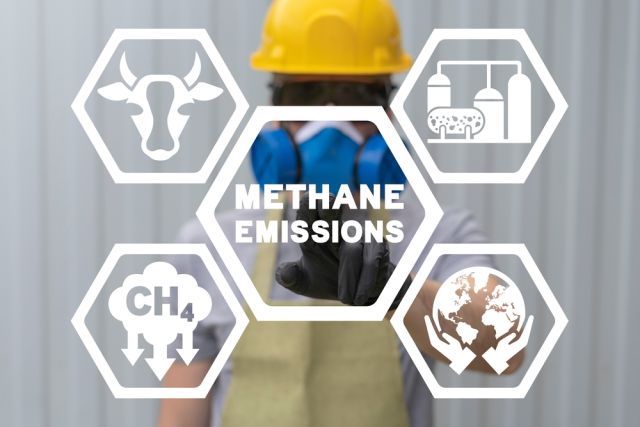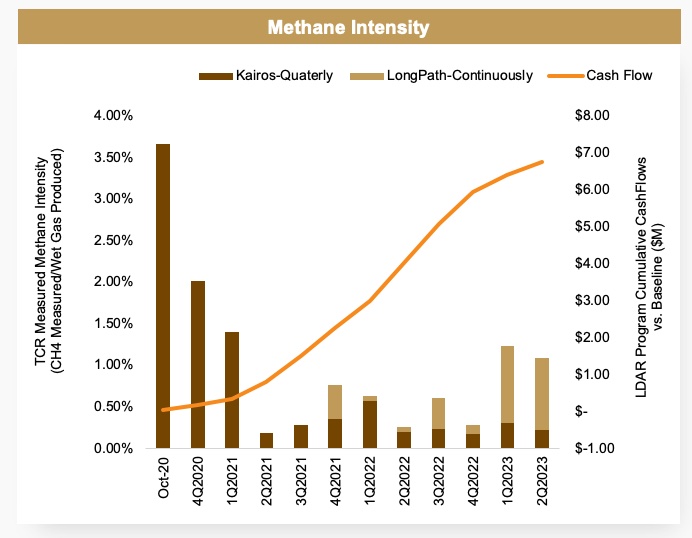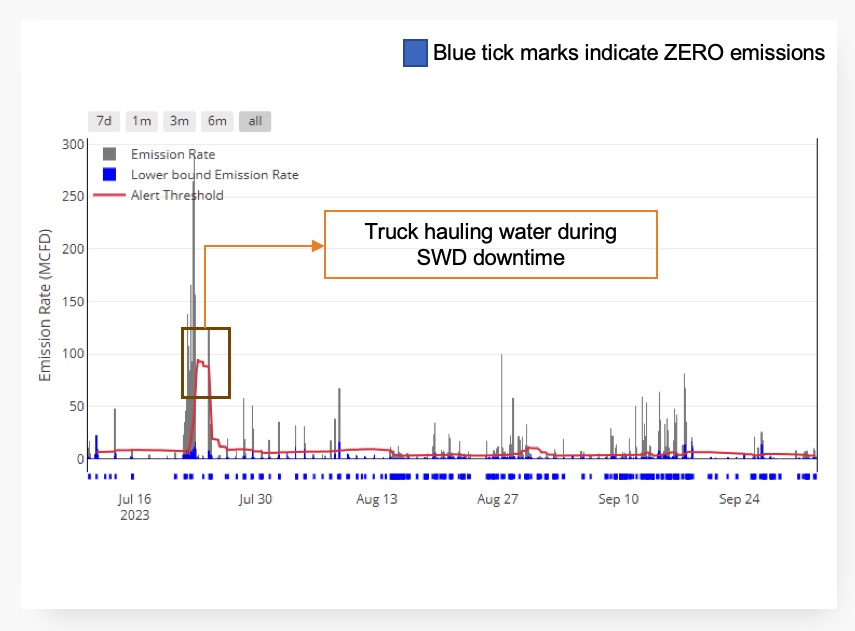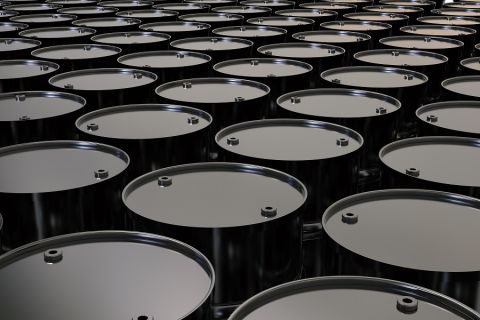
Triple Crown Resources, the private Permian Basin operator, is cutting methane emissions and delivering returns. (Source: Shutterstock)
In a lonely section of the southeastern Midland Basin, surrounded by land associated with companies that have gone bankrupt, Triple Crown Resources is embracing its gassy assets and geeking out on tackling methane emissions.
Methane abatement is an economic and environmental opportunity for the private operator that producing about 32,000 boe/d across some 104,000 acres in Texas’ Irion and Crockett counties. Although the area has a “bad reputation” of being gassy, according to Ryan Keys, co-CEO and cofounder of Triple Crown Resources, the company still produces about 40% oil. Accepting that it will likely never have big oil volumes seen in other parts of the Permian, Triple Crown focused on gas marketing, infrastructure, offtake and reducing emissions, he said.
“We not only have no routine flaring, we don’t really have any flaring at all under except under very crazy situations,” Keys said during Hart Energy’s Executive Oil Conference in Midland. “We get good gas margins. We hedge more gas than our oil, again because we can’t survive without that revenue.”
While Triple Crown began “nerding out” on methane a few years ago, as Keys puts it, a looming new methane fee may further incentivize oil and gas companies to step up methane emissions reductions efforts. As part of the Inflation Reduction Act, the methane emissions fee will start at U.S. $900 per metric ton of methane emitted above a set threshold in 2024. The fee increases to $1,200 in 2025 and rises to $1,500 in 2026.
The methane fee will mark the first time the U.S. directly imposed a charge, tax or fee on greenhouse gas emissions. Its arrival will come as methane emissions rise in the U.S., despite reduction efforts and increased renewables use. Emissions of methane increased by 14 parts per billion (ppb) to 1,911.9 ppb in 2022, according to the National Oceanic and Atmospheric Administration.
Methane, which traps more heat than CO2, emits from sources such as landfills, livestock and oil and gas wells. It is considered a main contributor to global warming.
Attacking methane
Triple Crown is among the operators that became more aggressive at attacking methane emissions in the Permian Basin. As the company grew its University Lands position, acquiring land relinquished by EP Energy, the contiguous acreage provided an ample sweep radius for lasers to capture data.
The company’s methane intensity fell about 90% since 2020, Keys said.
Emissions below 0.20% of methane production for wells are exempt from the methane fee.
Keys noted that most of Triple Crown’s readings are now below the detection threshold to trigger the methane charge. That, however, was not always the case.
“When we first started, about 3% of our gas was leaking. We were not proud of that,” Keys said.
Triple Crown’s emissions reductions efforts include flyovers and ground-based continuous monitoring solutions from LongPath Technologies, which installs and maintains continuous line sensors in the field to obtain emissions data.
“When we introduced LongPath, we ended up measuring more methane, which is our biggest learning. The more you look, the more you find,” Keys said. “It makes sense because it’s continuous, it’s every day and it has a lower detection threshold. So, we’re seeing these little bitty leaks and not the big ones.”
Like others, Keys said operational challenges in the basin included oxygen content and vapor recovery units. Plus, a deluge of information posed a big challenge for data integration.
“Sometimes we get reports and we don’t want to see some of that data; we can’t action it, we don’t want to action it, especially the marginal stuff,” he said. “So, we had to build some pretty sophisticated IT solutions.”

‘Profitable journey’
Triple Crown called its journey to ultra-low emissions intensity profitable. Its strategy to profitably lower emissions includes leak detection and repair and facility upgrades, making vapor recovery units standard equipment and pursuing a portfolio with improved designs that minimize emissions.
Keys said he is not a big fan of relying solely on optical gas imaging, which are cameras that use infrared sensors to detect leaks. However, “it’s a good compliment to a full-cycle solution.”
“The next leg of improvement will come from our portfolio effect. We grow production through the low emissions facilities and get our costs down,” Keys said.
“We’ll be able to start tackling those marginal leaks based on some modeling and some real-life data,” he added. “We think leaks down to about 4,000 cf to 5,000 cf a day are actually profitable, cash on cash, to go fix just like you would a workover … even excluding the liability with methane fees and everything else.”
Keys said the majority of Triple Crown’s emissions readings are zero.

LongPath provides an emission reading every 27 minutes on average. Triple Crown’s measured methane intensity to date at the facility is 0.04%, based on the company’s presentation.
“LongPath worked with us on the model. We didn’t have many wells out here to begin with, but we created a fee model wherein their revenue would scale with our well count so that our per well cost by the time we get to the end, it’ll be about $20 per well per month. And that’s just on an older vertical,” Keys said. “On a newer horizontal well, it’s maybe less than a rounding error. So pretty good situation out there and deployment of new technology.”
Recommended Reading
US Gulf Coast Heavy Crude Oil Prices Firm as Supplies Tighten
2024-04-10 - Pushing up heavy crude prices are falling oil exports from Mexico, the potential for resumption of sanctions on Venezuelan crude, the imminent startup of a Canadian pipeline and continued output cuts by OPEC+.
What's Affecting Oil Prices This Week? (March 11, 2024)
2024-03-11 - Stratas Advisors expects oil prices to move higher in the middle of the year, but for the upcoming week, there is no impetus for prices to raise.
Oil Dips as Demand Outlook Remains Uncertain
2024-02-20 - Oil prices fell on Feb. 20 with an uncertain outlook for global demand knocking value off crude futures contracts.
US Oil Stockpiles Surge as Prices Dip, Production Remains Elevated
2024-02-14 - EIA reported crude oil stocks increased by 12.8 MMbbl as February began, far outstripping expectations.
What's Affecting Oil Prices This Week? (March 4, 2024)
2024-03-04 - For the upcoming week, Stratas Advisors expect the price of Brent will move sideways and will struggle to break through $85.




